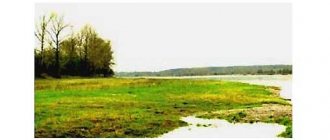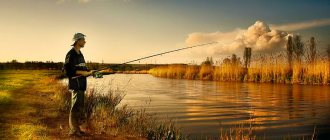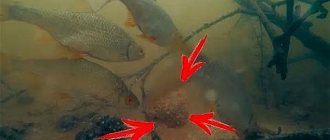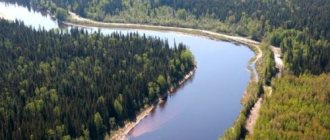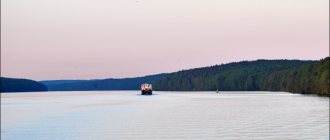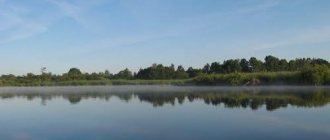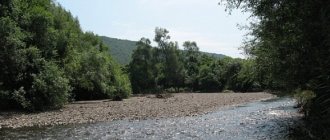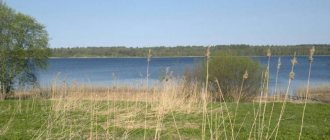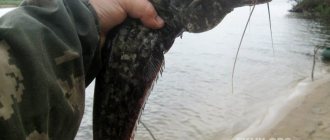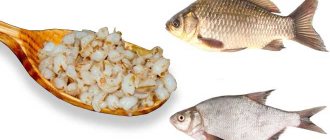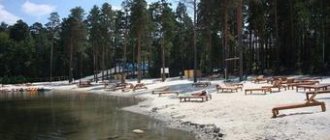What can compare with such a phenomenon as summer night fishing on the Yenisei? It is perhaps impossible to describe in words those sensations that are simply overwhelming. In order to experience indescribable emotions, you need to go fishing in person.
Undoubtedly, daytime fishing on the Yenisei 2021 will also be memorable for everyone, because there are many types of fish here, and no one will be left without a catch. If you think about the question of what kind of fish is found in the Yenisei, then the answer is simple:
- Sterlet.
- Ruff.
- Taimen.
- Nelma.
- Muksun.
- Omul.
- Siberian sturgeon.
- Pike.
- Burbot.
- Perch.
- Beluga.
But avid fishermen know that in order to get the desired catch, they must go for it at night. A little about the Yenisei The Yenisei is a river that is rightfully considered one of the largest rivers in the Russian Federation and Siberia. It stretches for 5 thousand kilometers.
Along the meridian, this river divides Russia conditionally into two parts. It is worth noting that this division is both cultural and geographical. People divide it in such a way that the right bank belongs to Siberia, and on the left side the European part begins smoothly.
In the ranking of rivers by length, the Yenisei is in second place in the Russian Federation. The river begins in the mountains, its flow in this area has incredible force, which makes it impossible to even approach the water. After this, the water flow follows along the West Siberian Lowland, which allows the flow speed to be significantly reduced. However, no matter what, the river is a type of treacherous river, and is also characterized by an increased danger for inexperienced fishermen.
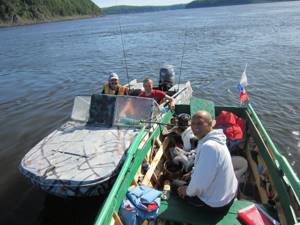
Rich areas
Throughout the entire river there is a huge amount of fish. The Yenisei is the place where fishermen manage to catch truly trophy fish. But it is worth considering that the river is not the same throughout its entire territory, therefore the fish caught in different parts of it may also be different.
Before you start fishing, you need to study the river map in detail. So, in the upper part it is a mountain stream flowing among mountain rocks. Therefore, fishing here is almost impossible, since access to the shore is blocked almost everywhere. However, experienced fishermen have gotten used to it and know their “paths”. The situation is better in the middle part, where the river becomes wider. But the current here is less. In the middle part of the river, one bank is steep and steep, but the other is flat and quite suitable for fishing.
The Yenisei, as mentioned earlier, is home to a considerable amount of fish. These are crucian carp, pike, bream, perch and sorog. If you turn a little to the north, you can find taimen, grayling and lenok here. Despite the fact that in many parts of the river the water is very cold, carp and carp live here. Moreover, they are not caught by chance.
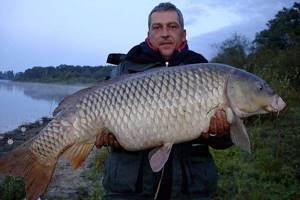
Carp
By the way, on the territory of Krasnoyarsk there is even a fishing club, whose members are aimed specifically at carp and carp. Large sizes of sorog, bream and crucian carp are also caught here. There are areas on the river where you can catch peaceful species directly from the shore. For these purposes, bottom-type gear is most often used. And much less often - ordinary float fishing rods.
General information about the river
The river valley covers an area of 2,500,000 square kilometers and has many tributaries and lakes. The length of the Yenisei is 3,487 kilometers, after which the channel leads to the Kara Sea. According to official data, the river is in fifth place among many reservoirs in the world, being one of the longest water bodies created by nature. In terms of basin area, the river valley ranks 2nd among Russian reservoirs and 7th by world standards.

The Yenisei begins its journey in the city of Kyzyl, delimiting the western and eastern parts of Siberia. The Yenisei stretches across all climatic zones of the Siberian Federal District, in its lower reaches there are heat-loving animals, for example, camels, while the upper reaches can be occupied by polar bears.

Some interesting facts:
- The river has other names. “Ionessi” translated from the Evenki language means big water, which is what the Yenisei is famous for to this day. Also popular are the names Kim, Ulug-Khem and Khuk.
- Half of the water area depends on the natural melting of ice and snow. This feature makes the water level unpredictable. In snowy winters, the Yenisei overflows its banks, flooding nearby settlements. Despite the rapid rise in water level during floods, in some places its depth does not exceed 1 meter. The maximum level that could be recorded was 28 meters above the natural level established throughout the season. As for the depth of the Yenisei, in some areas it reaches 70 meters. Annual floods increase the area of the valley by up to 20 kilometers, so populated areas are usually located at higher elevations or far from the river basin.
- Every year a lot of waste gets into the water, which at times makes it unsuitable for many species of fish, including rare sturgeon. Constructed enterprises, various hydroelectric power plants and nuclear power plants accompany discharges and contamination. The flora and fauna were also affected by the construction of reservoirs and dams, limiting the movement of fish during spawning.
- According to unverified facts, a whale was discovered in the Yenisei waters, which swam there by accident. What happened to the marine animal is unknown, but cases of such encounters with a wide variety of wildlife in the vicinity of the Yenisei are not at all uncommon.
- Several centuries ago, a canal was built that connected two large rivers: the Yenisei and the Ob. Today it is overgrown with reeds and cattails and is not used in any way.
Read: Fishing in Ufa
The Yenisei is used as a navigable river, rising almost 1000 kilometers upstream. Significant depths remain for 2000 kilometers, and the deepest point is located in the river delta.
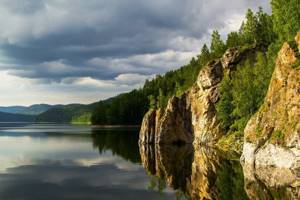
Predators
Which predators live in the Yenisei? As a rule, spinning anglers hunt for large perch and pike. Moreover, the latter can easily be caught weighing up to ten kilograms. And the perches here are also not small.
However, fishermen are often faced with the fact that it is not so easy to get to the overgrown banks of the river. Therefore, most often they use rafting by boat. Moreover, rafting can be carried out both along the main channel of the Yenisei and along its tributaries.
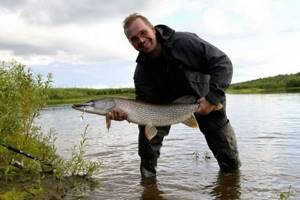
What else can you expect when fishing?
On the territory of the river there are large green islands. As a rule, it is in these places that trophy pike are caught.
There are other fish here that are worthy of attention, for example, burbot. It is caught not only in the main part of the river, but also in the largest tributaries of the Yenisei. The main time when you can get good loot is winter and autumn. If fishing is carried out in open water, then ordinary bottom gear will do. Moreover, the best catch is obtained at night. If fishing occurs in winter, then chicken intestines, dead fish, spleen, fish fillets or crawls are used as bait.
In winter they go after burbot with a spinner and bait. Or a bale can be used, but a natural bait is also placed on it.

In addition to burbot, you can catch other fish in winter. So, in the Yenisei you can catch perch, soroga, grayling and chebak. You can catch large bream. Pike are caught on the girders.
Fishing in winter on the Yenisei is convenient because the ice provides new trails for fishing. In addition, due to the fact that quite severe frosts are observed in the territory in winter, the ice here is stable.
Fish and fishing
There are more than 100 species of fish in the Yenisei, such as sturgeon, sterlet, pike, carp, gudgeon, crucian carp, perch, bream, carp and others. There are not only representatives of freshwater, but also marine and brackish water individuals. For example, Atlantic herring, black-bellied liparis, Arctic char, Arctic char, lumpfish, cod, navaga. A significant share of the fishery is the catch of polar cod. Other fish species do not have such commercial importance, but attract amateur fishermen from all over Russia.
The following are found as semi-anadromous:
- omul;
- nelma;
- muksun;
- Siberian vendace;
- Asian smelt.
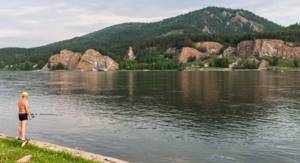
At the mouth you can catch grayling, redfish, burbot, and whitefish. There are migratory species that temporarily come from the Kara Sea in search of food. Arctic fish species of quite large sizes are often found here. Fishermen are attracted by the opportunity to catch real trophy specimens - omul weighing up to 3 kg or char - up to 15 kg.
In its middle reaches, the Yenisei is wide and calm. Crucian carp, bream, and sorog live here. You can take large pike, up to 10 kg, as well as large perch on a spinning rod. Closer to the north, taimen, carp, carp and grayling are caught. In the upper reaches, fishing is difficult because there are no convenient approaches to the shore, the river is stormy and fast.
In the middle reaches there are large islands overgrown with grass. In such places you can catch trophy pike. Burbot is found in the Yenisei and its tributaries; it is best to catch it in the fall. Burbot also bites on spoons in winter. Fans of winter fishing hunt for sorog and perch, as well as trophy bream.
Fishing tackle
The variety of fish species on the territory of the Yenisei allows each fisherman to choose both a place for fishing and the optimal choice of gear.
So, wherever there is space on the shore for fishing, cargo and riding gear can be used. Additionally, you can use artificial and natural baits, spinning rods, tackle and fishing rods.
As you can see, fishing on the river provides enormous opportunities for both professional fishermen and just amateurs. You just need to choose the right place.
Free fishing in the Krasnoyarsk Territory
The reservoirs of the Krasnoyarsk Territory are very interesting for fishing. The peculiarities of the geographical location of the region lead to the fact that it is quite possible to successfully catch species of fish here that are simply not found in the middle zone. Grayling, lenok, taimen and many other species are quite successfully caught here using spinning rods, and the usual and ubiquitous perch and pike grow to trophy sizes with relatively little fishing pressure.
Local fishermen usually boast of excellent fishing for the following fish species: carp, roach, bream, crucian carp, pike, carp, catfish, perch, pike perch.
Here are the TOP 10 best places where you can fish for free in the Krasnoyarsk Territory:
Krasnoyarsk reservoir
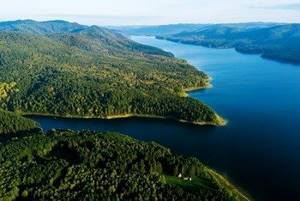
Description, what kind of fish is found, how to get there:
Due to its more than impressive size, this body of water is often called the Krasnoyarsk Sea. There are conditions here for both shore fishing and fishing from boats. Moreover, in the latter case, the probability of catching trophies increases many times over. Fishing in the Krasnoyarsk Sea from the shore is primarily feeder and float fishing for roach, bream and carp. Bleak fish are often caught on the hook, reaching quite substantial sizes here.
For successful coastal fishing, you should be prepared for the need for long or even very long casts, since most promising points should be looked for at a considerable distance from the coastline. Feeder rods with a length of 4.2 meters or match float rods of the same length will be the most suitable gear here. Oddly enough, carp is also found in the Krasnoyarsk Sea, although it is a heat-loving fish. However, an abundant food supply not only ensures the stability of the population, but also provides an opportunity to hunt for trophy specimens of wild carp.
For fans of spinning fishing, there will also be a decent catch here - trophy-sized pike and perch, whitefish, sterlet, grayling, catfish and burbot are found in the waters of this reservoir in fairly large quantities, and the size of the fish will delight fans of trophy hunting.
GPS coordinates: 55.10502, 91.60062
Lake Bolshoye (Parnoye)
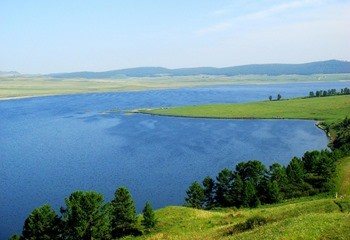
Description, what kind of fish is found, how to get there:
The Sharypovsky district can rightfully be called a sort of small land of lakes. There are 273 lakes, of which 93 have a surface area of more than 1 hectare. The largest is Beloye, but it is not recommended to go on vacation; it is used as a fishery reservoir. But the second largest is Lake Bolshoye, this is a place of pilgrimage for tourists. The tent camp of savage tourists is, in fact, the entire perimeter of the reservoir. But keep in mind that travel to the most popular parking lot - Bald Beach - is paid. But there are toilets, a bathhouse, and a store.
The dimensions of the lake are 12 x 5 kilometers. The water has a uniform temperature, surface and warms up quite well, up to +25 degrees. In addition, the water is very clear. The shores and bottom of the lake are mostly sandy, which is why there are so many beaches. Many tourists live on the lake for weeks, spending their holidays in this Siberian paradise. In recent years, several hundred tents have gathered on the banks of the Bolshoi.
The lake was located on the border of the steppe and forests and was surrounded by several small reservoirs, also very beautiful. So if you suddenly want to be away from noisy neighbors, you can stay near lakes Krugloye, Sarbagol, Elovoye and others.
GPS coordinates: 56.22266, 90.32507
Lake Meat Processing Plant
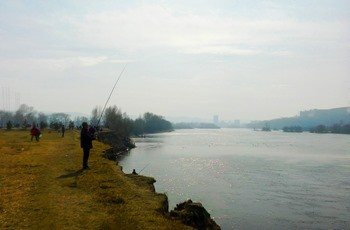
Description, what kind of fish is found, how to get there:
It is located within the city, so it is especially popular. One of the advantages of this place is the ability to get there by public transport - stop. Myasokombinat (Myasokombinatsky Pond) - bus No. 52, 87, 137. In addition, you can use a personal car, in which case go to Kalinina Street to Myasokombinat Street.
There is an open and free beach here, so after a good catch you can relax on the shore and swim. True, the lake is not particularly clean, and there is nowhere to step on the beach because of the garbage that vacationers leave behind.
GPS coordinates: 56.06381, 92.73246
4. Kemchug River
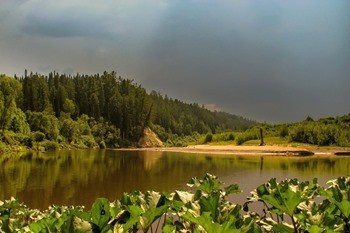
Description, what kind of fish is found, how to get there:
The Kemchug River is suitable for family holidays with tents and exciting fishing. You can catch quite large trophies, despite the shallow depth of the river, only 1 meter.
GPS coordinates: 57.07294, 91.1745
5. Kacha River
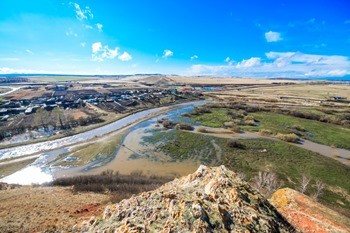
Description, what kind of fish is found, how to get there:
Not far from the village of Solontsy there is the Kacha River. It is better to go here by private car. Landmark - the village of Sukhaya. This is an ideal place to go fishing away from noisy companies and crowds of tourists. Moreover, the catch promises to be good. The most popular species are dace, pike, grayling, perch and, of course, minnows.
The Kacha River is famous not only for its abundance of fish, but also for mosquitoes, so you must take any protective equipment with you.
GPS coordinates: 56.04605, 92.84536
6. Angara River
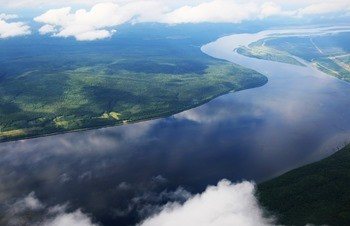
Description, what kind of fish is found, how to get there:
A large river with quite varied fishing conditions along its entire length. A fairly large diversity of species lives here - pike, perch, carp, grayling, lenok, whitefish, taimen, roach, bream and many other species of predatory and peaceful fish. Sterlet, trout, peled, and sturgeon are also found, although not often. However, when planning a fishing trip, you should primarily rely on information received from local fishermen, since different species prefer to stay in different places in the river. Thus, pike, roach and perch prefer to stay relatively close to the shore, but the so-called channel pike, which reaches trophy sizes, often stays at great depths at a significant distance from the shore. In the tributaries of the Angara, as well as various creeks, there is a greater likelihood of finding crucian carp, tench or carp. Whitefish, sturgeon, taimen, and sterlet often accumulate in small flood lakes and oxbow lakes.
It should also be taken into account that most local fishermen consider fishing from the shore on the Angara during the open water season a waste of time, since almost all the trophies were caught from boats. The presence of a swimming device significantly expands the fisherman’s capabilities, providing access to the most promising points, which in most cases are located at a significant distance from the coastline.
GPS coordinates: 58.10773, 93.98332
Bazaikha River
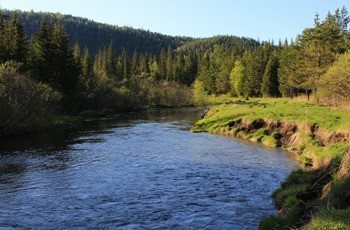
Description, what kind of fish is found, how to get there:
It flows in the territory of Mansky and Berezovsky districts. You can get there by bus – stop Bazaikha (Sverdlovskaya St.). Routes: 19, 37, 50, 54, 78, 80 (on weekends). If you have a personal car, then turn from Sverdlovskaya Street towards Bobrovy Log. Interesting walking route. Fresh air and clean water. The river on its left bank borders the Stolby nature reserve, so beware of wild animals.
Grayling, lenok, and taimen are well caught.
GPS coordinates: 55.77902, 93.20551
8. Rybnaya River
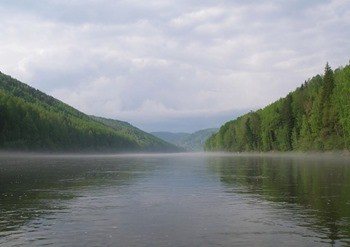
Description, what kind of fish is found, how to get there:
Unlike many other reservoirs of the Krasnoyarsk Territory, this river is worth highlighting primarily for its accessibility. While it is simply impossible to get to many other places without an SUV or a reliable boat, here you can easily get to the fishing spots by taxi or by train. The diversity of the terrain will also be interesting for many anglers - there are fast sections with rapids and quiet backwaters. Primarily predators are caught here - perch, pike, grayling, lenka, so the preferred tackle for the Rybnaya River is a spinning rod with a sufficient margin of safety, since the local fish are often impressive in size. The main catch for lovers of peaceful fishing on this river is roach, which can be caught with float and feeder gear.
GPS coordinates: 55.82445, 94.56352
Esaulovka River
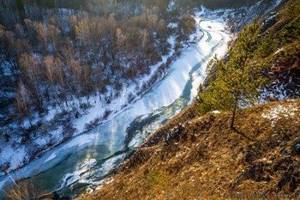
Description, what kind of fish is found, how to get there:
It is distinguished by a rather fast flow and an abundance of rapids and other obstacles in the upper reaches, but below it becomes quite calm. In the lower reaches there are also large-sized crucian carp. There are many settlements located not far from the river, and along the banks there are dirt or gravel roads almost all around, so getting to the fishing spots is relatively easy. For its wild currents and picturesque banks, the river is loved not only by fishermen, but also by rafting enthusiasts. Fish here is caught primarily with spinning gear. The catches include pike, perch, grayling, and lenok.
In the upper reaches the river is calm and wide, the bed often winds and forms many oxbow lakes. However, descending from the Putorana plateau, the river dramatically changes its character - it straightens, a powerful current and rapids appear. The reservoir is extremely interesting due to minimal fishing pressure, which is due not least to its inaccessibility. There are no settlements on the river, there are also no roads, travel companies that organize rafting on the Vivi bring their clients to the upper reaches of the river by helicopter.
However, those who are not afraid of transport problems will be rewarded with excellent catches. The river is famous for its abundance of taimen, pike, whitefish, grayling, perch, and ide.
GPS coordinates: 55.64914, 93.7763
10. Yenisei River
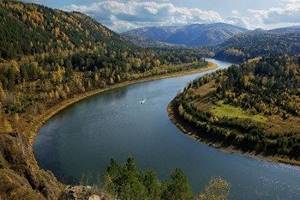
Description, what kind of fish is found, how to get there:
Fishing on one of the largest rivers in the world can also be interesting and exciting. There is quite a wide variety of species here, but the main fishing objects here are pike, perch, roach, bream, crucian carp, lenok, grayling, carp, and taimen. At the same time, for grayling, taimen and lenok, experienced fishermen recommend going not to the Yenisei itself, but to its numerous tributaries. It should also be taken into account that most of the places on this river are quite wild, there are practically no roads, so most anglers prefer float fishing for several days.
The burbot, which here often reaches quite large sizes, deserves special mention. This fish is caught mainly when the air and water temperatures drop significantly - in autumn and winter. You can fish both on donkeys and feeders, using pieces of fish, chicken giblets or crawlies as bait, and on spinning rods, using wobblers with deep depth or edible silicone.
GPS coordinates: 53.50197, 91.77734
Do you know any other good places for fishing in the Krasnoyarsk Territory - write in the comments
